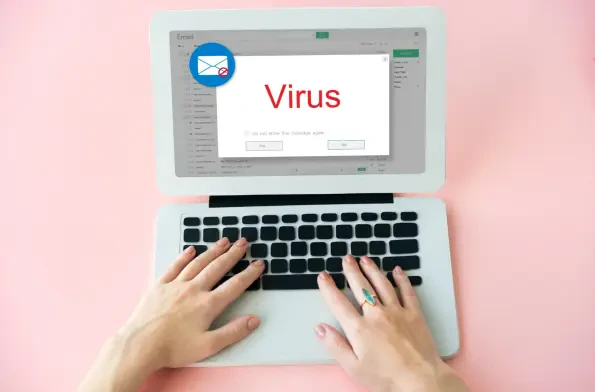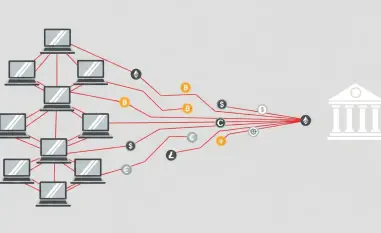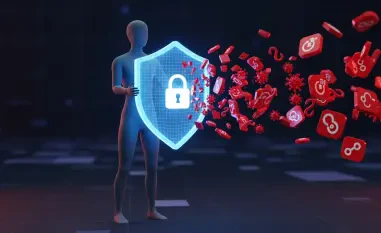In the evolving landscape of cybersecurity, phishing has emerged as a predominant threat, proving that traditional protective measures like spam filters are often insufficient for thorough detection. Phishing attacks have become sophisticated, tricking even the most vigilant employees, leading to compromised credentials and significant data breaches. As these attacks become increasingly complex, the necessity for cutting-edge detection solutions grows. Interactive sandboxing technology has surfaced as a formidable tool, enabling swift and precise identification of phishing threats. This approach provides a robust environment where suspected threats can be analyzed in a controlled setting, revealing attack mechanisms that might otherwise escape detection. By understanding the intricacies of this method, security teams can equip themselves better against the cunning tactics of modern cybercriminals.
Step 1: Upload and Analyze Suspicious Files
When a potentially malicious email is flagged but not decisively identified, one effective method to confirm its threat level is by analyzing it within a sandbox environment. This secure virtual machine allows files to be opened and links to be clicked without endangering the local system. Through sandboxing, SOC analysts can study the behavior of the email and assess its authenticity or danger. The process begins by uploading the suspect file or URL into the sandbox, selecting the desired operating system, and configuring any necessary settings. Instantly, a fully interactive virtual machine is presented to the analyst, ready for comprehensive investigation.
The interactive nature of sandboxing simplifies the analysis process, transforming complex tasks into straightforward procedures. Analysts can observe how a suspicious email operates, tracing its origin and uncovering concealed threats within seconds. For example, a phishing email may contain a seemingly innocuous button designed to lure victims into revealing sensitive information. By examining its structure within a sandbox, the hidden dangers and the email’s intention become transparent. This capability empowers security teams to immediately address threats, significantly reducing the response time to potentially damaging phishing attacks.
Step 2: Detonate the Full Attack Chain
Once a suspicious email is investigated, the succeeding step involves detonating the entire attack chain to understand its full scope. Sandboxes allow a comprehensive view, illustrating each stage of the phishing attempt from start to the intended outcome. This capability is crucial for noticing tactics like redirect chains and CAPTCHA tests, which are often designed to fool automated detection systems. These components are part of a phisher’s strategy to create convoluted pathways that disguise their final objective.
An important part of this phase is interacting with the phishing elements like CAPTCHA challenges that automated tools typically can’t handle. The sandbox’s interactive functionality is pivotal here, enabling users to manually engage with these challenges or use auto modes to simulate user behavior. This reveals the final phishing pages, allowing analysts to witness the deception firsthand. For instance, a fake login page may mimic a trusted service, aiming to collect user credentials. By visually inspecting these details, discrepancies such as mismatched URLs can be detected, identifying the scam’s real intentions before any data is compromised.
Step 3: Analyze and Collect Indicators of Compromise
After dissecting the phishing attack, gathering indicators of compromise (IOCs) is crucial for future prevention and mitigation strategies. IOCs are pieces of information, such as IP addresses or domain names, that can alert the presence of a potential threat. Solutions like sandboxing help centralize this data, making it accessible and actionable for security teams. In the sandbox environment, all activities are logged and categorized, providing a detailed account of the phishing attempt’s structure and traceable elements.
Security teams can utilize these findings to enhance their defenses, including updating detection algorithms and enriching threat intelligence reports. The sandbox logs offer a comprehensive timeline of events, capturing HTTP/HTTPS requests and other critical behaviors. By observing these interactions, teams can pinpoint the attack’s network infrastructure, noting any external domains involved. Additionally, labeled processes highlight where malicious activities are most concentrated, allowing analysts to build precise attack signatures. This data becomes invaluable when constructing preemptive blocklists to thwart future phishing attempts and correlate findings with other security tools, enhancing the overall fortification against phishing threats.
Embracing Interactive Sandbox Solutions
Incorporating sandbox solutions into an organization’s security framework delivers numerous advantages. The technology not only accelerates incident response times but also sharpens the overall detection rate by visually mapping the full spectrum of an attack. By leveraging live threat simulations, analysts can gain practical, hands-on experience, which greatly improves their skill set and understanding of phishing tactics. Additionally, the cloud-based nature of many sandbox solutions ensures seamless integration without extensive infrastructure requirements, allowing teams to analyze threats from any location.
Sandboxing encourages collaboration within security teams, as real-time data sharing and monitoring facilitate coordinated responses to incidents. This shared visibility is crucial for ensuring that all team members have access to the same information, promoting a unified approach to security challenges. As threats continue to evolve, staying agile and informed is essential. Embracing interactive sandboxing solutions is a strategic move, ensuring that security protocols remain resilient and responsive, effectively countering the ever-growing threat of phishing.
Looking Ahead
When an email is flagged as possibly malicious but not conclusively identified, analyzing it within a sandbox environment can help confirm its threat level. This secure virtual space allows files to be opened and links clicked without risking the local system. SOC analysts can then study the email’s behavior to assess whether it is authentic or dangerous. The process involves uploading the questionable file or URL, choosing an operating system, and adjusting any necessary settings. The analyst is then provided with an interactive virtual machine for detailed investigation.
Sandboxing simplifies the analysis, turning complex tasks into manageable steps. Analysts can observe how a suspicious email functions, trace its origin, and uncover hidden threats swiftly. For instance, a phishing email might include a seemingly harmless button aimed at coaxing victims into divulging sensitive information. Examining this within a sandbox reveals any concealed dangers, clarifying the email’s intent. This capability empowers security teams to rapidly tackle threats, cutting down the response time to damaging phishing assaults.













